Clairabelle, the declawed kitty who is suffering from her amputations
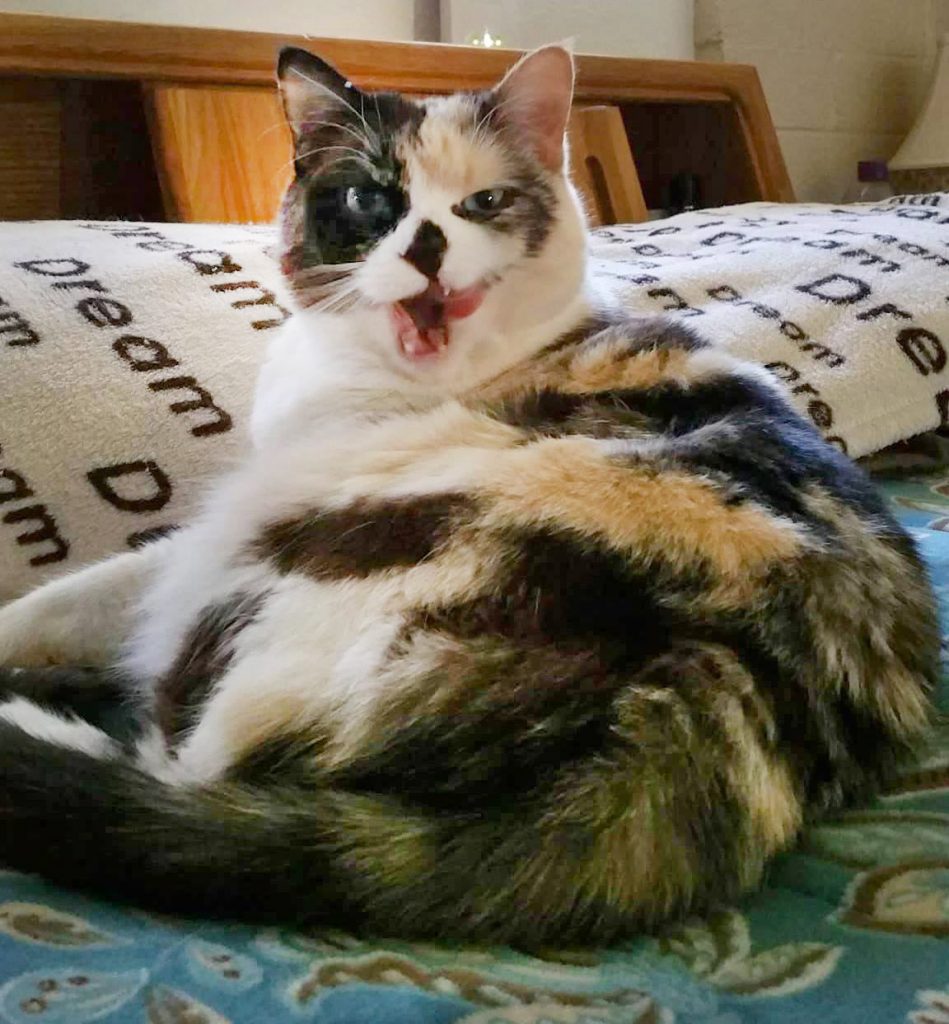
In 2015 I adopted a 5 year old calico that was front paw declawed. She was declawed with her spay surgery.
I was told that she is a pure breed straight ear Scottish fold.
I picked her up in a freak snowstorm at 4 am because her former owner was leaving on vacation and would be dropping her at the vet for euthanasia if I couldn’t get her that morning. They said she was having cat pan issues. I was certain I could help her and I fell in love with the pictures they sent me of her. I’m happy to say that we never had any pan issues.
She is getting older and I noticed that her right leg was sensitive sometimes after she would jump down off the furniture. Lately, she is limping most of the time. I can feel a pointed piece of what I think is bone in her sore toe.
She is a love bug but when she is hurting she will gently bite my hand while I’m checking her feet. I love her dearly and I know she was destined to be my baby for the remainder of her days
I Think I Would Know If My Cats Toes Were Gone
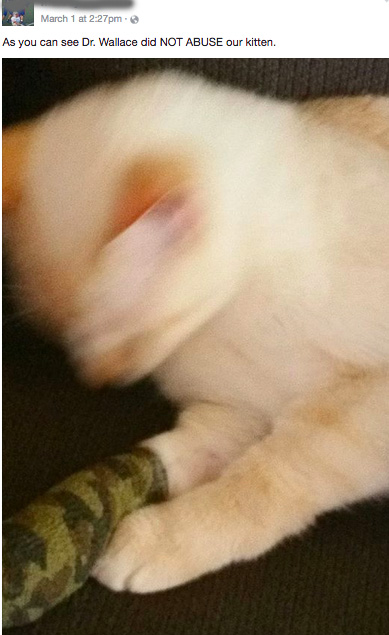
This veterinary practice in Oklahoma uses a guillotine clipper for their declaws and says that they, “cut off the nail and nail bed then use surgical glue to close the incision.”
They charge $69 for a 2 paw declaw and $97 for a 4 paw declaw.
When a cat owner asks them if there are any negative consequences to declawing or if there will be complications they say, “typically not, we do them frequently with no problems.”
Two Declawed Cats, Zachary and Maximilian
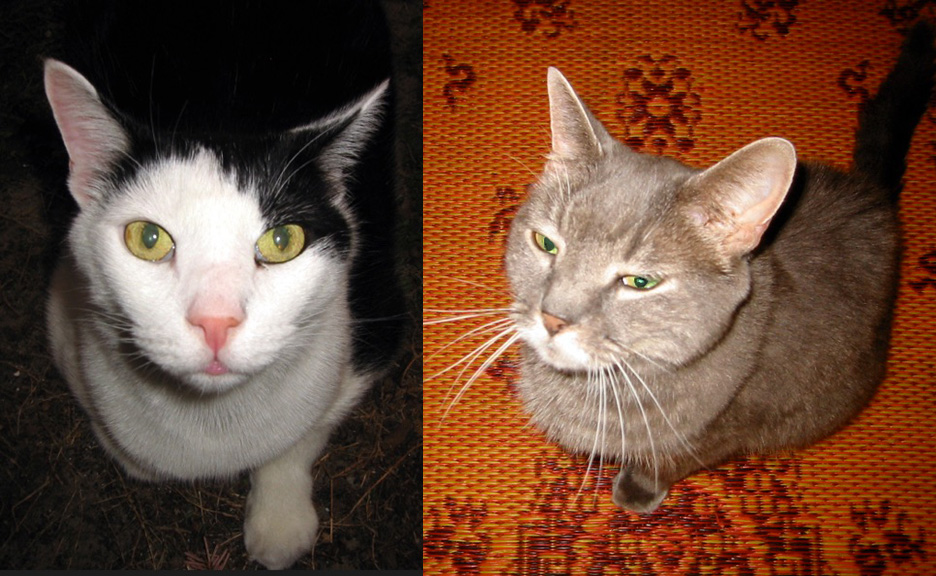
A frequent justification for declawing is that the cat would otherwise be banished from the home and that the procedure is a small price to pay for the kitty to live out its life in a safe and nurturing environment.
Sounds good, but it’s complete BUNK! Anyone who would subject their cat to the pain, disfigurement, and lifetime of misery resulting from a declaw procedure would discard them without a second thought.
Buddy The Declawed Cat
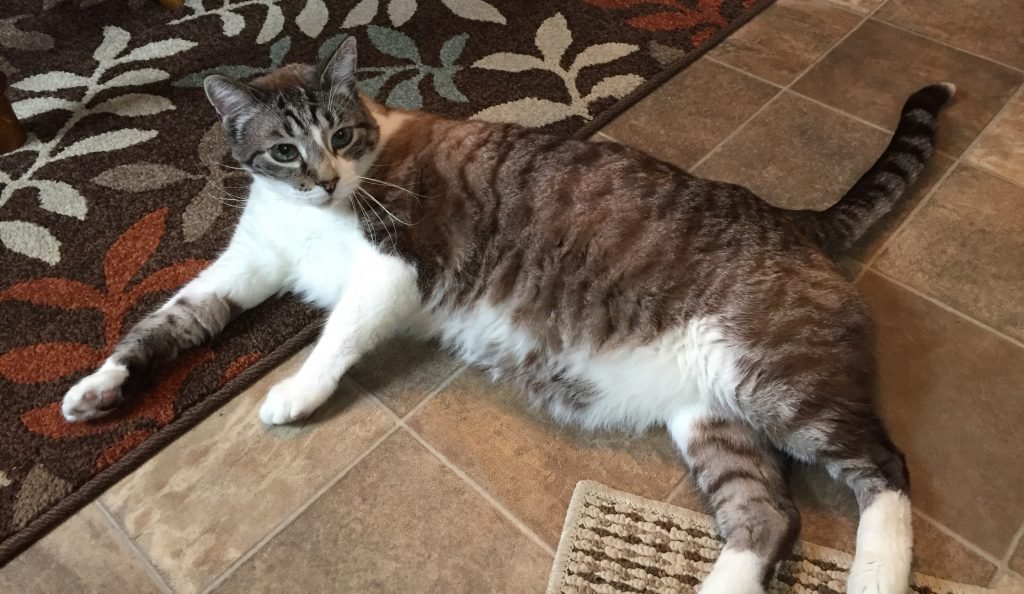
The cat’s paws were scarred deeply in the back, with declawed stumps in the front. Affectionately known as “Buddy”, the cat pees outside the litter box, and is a powerful biter. It’s obvious why his owners threw him out of the house. How he survived outdoors was truly a miracle.
When you know better, you do better
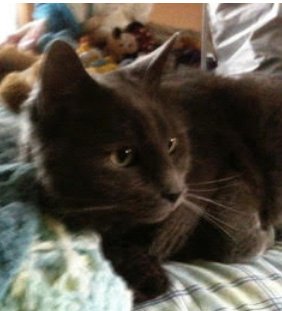
My family became educated on declawing and we made the relationship between the kitties work without having to declaw another cat.
Amputating 10 Cat Toes Is No More Painful Than A Neuter – NJVMA SpokesVet
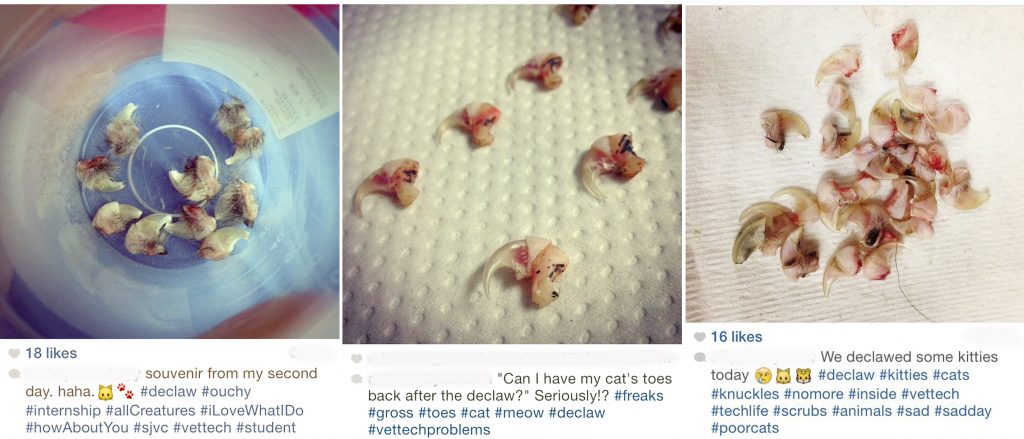
When cats start walking on their balls then we will start believing the NJVMA’s spokesvet Dr Yurkus and his animal hospital that declawing isn’t more painful than neutering.
Meanwhile, the American Association of Feline Practitioners’ policy on declawing states:
“Physically, regardless of the method used, onychectomy causes a higher level of pain than spays and neuters. Patients may experience both adaptive and maladaptive pain; in addition to inflammatory pain, there is the potential to develop long-term neuropathic or central pain if the pain is inadequately managed during the perioperative and healing periods.” [AAFP Policy Statement on Declawing, 2007.]
The Painful Truth About Declawing

To put these all this in perspective, there are, more or less, 80 million pet cats in the U.S. At least 20% are declawed (estimates range from 20-45%), which is 16,000,000 cats. If even only 5% have long-term painful complications (and the number is likely far higher), that’s still 800,000 cats with known chronic pain, obvious pain.
How many is too many to suffer?
Clearly, veterinarians as a profession have failed to keep up with modern medicine, failed to govern themselves, and failed to understand the universal, serious, and potentially lifetime pain they are causing cats by declawing. Sadly, there is no mechanism to enforce changes in the profession.
Therefore, legislation is necessary to stop the cruel and unnecessary practice of declawing.
NJVMA started a pro-declawing campaign called Love Your Cats NJ based on fears and speculations about increased euthanasia as a result of NJ anti-declaw bills. 2016
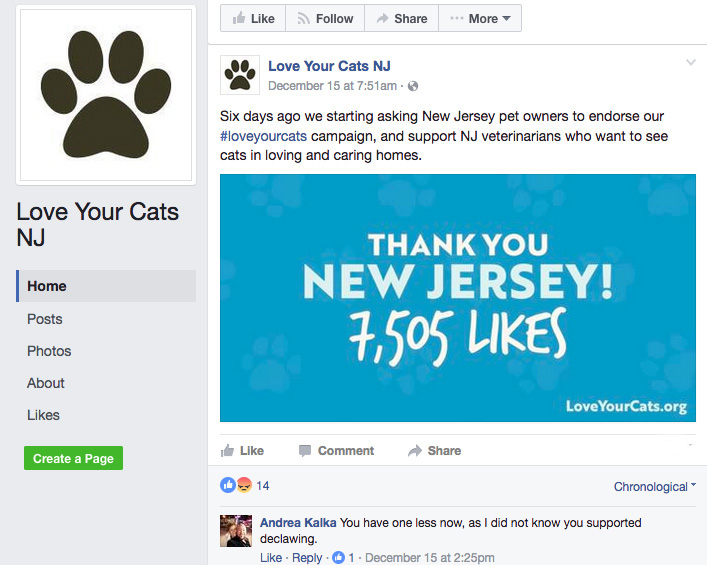
Ever wonder why NJVMA’s pro-declaw facebook page has more likes from countries that don’t speak English and likes from many other states, than from New Jersey?
Yep, the NJVMA doesn’t want you to know the ugly truth about their deceitful campaign and the lies in their testimony to NJ legislators, in their shameful attempt to stop our important cat protection bill.
The truth is, only around 2% of their followers are from New Jersey according to my investigation team. (197 followers) The rest are from places all over the world, from Canada, to the United Kingdom, to Afghanistan, Brazil, and many other states in America.
NJVMA Spokesvet Dr Mike Yurkus Defends Cat Declawing With Big Fat Lies To Legislators
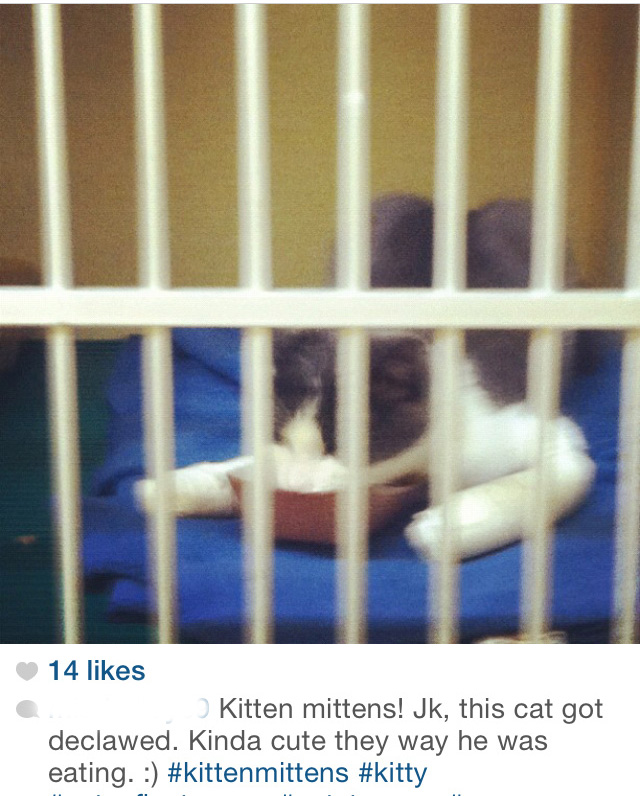
Dr Mike Yurkus, NJVMA board member, said, “It is incorrect that the last bone of the finger is removed. It is the nail bed. The claw bed is removed and the tendons are detached. Bone is not removed. We do not cut bone.”
FACT- Declawing is always the amputation of the last bone that the cat’s claw is attached to. Many of the New Jersey veterinarians, including one of the NJVMA board members practice Oradell Animal Hospital, in my study, uses the old school clipper method, which often cuts just part of the bone off and the cats are left with painful bone chips in their paws.
Love All Cats And Don’t Declaw Them
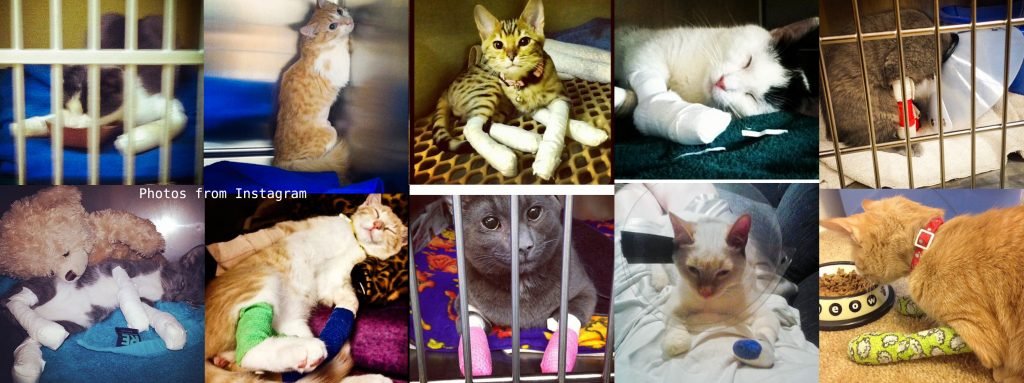
Dr Mike Yurkus statement in the NJVMA Testimony at Assembly Committee Hearing 11/14/2016, “The discomfort level is no more than in a neuter than it is in the declaws that are done properly.”
